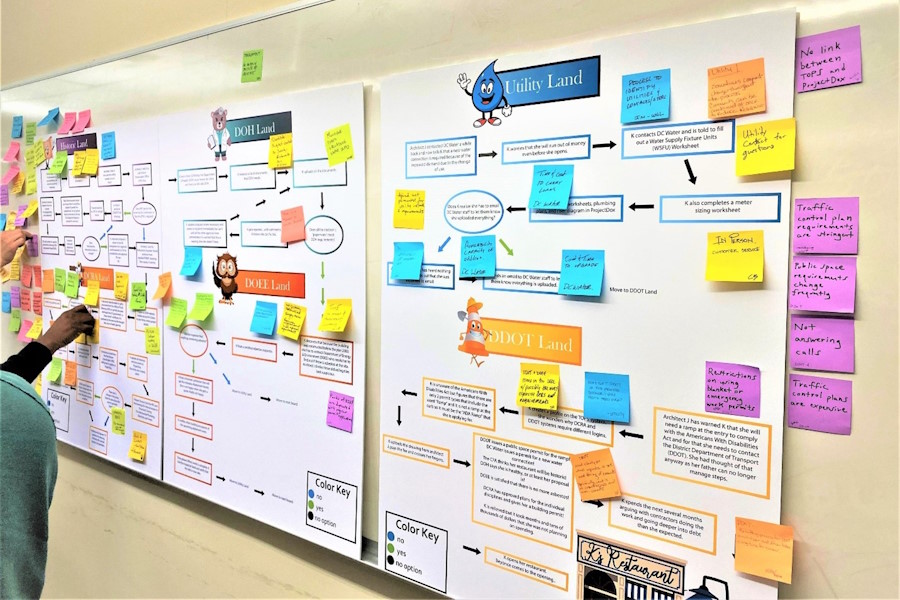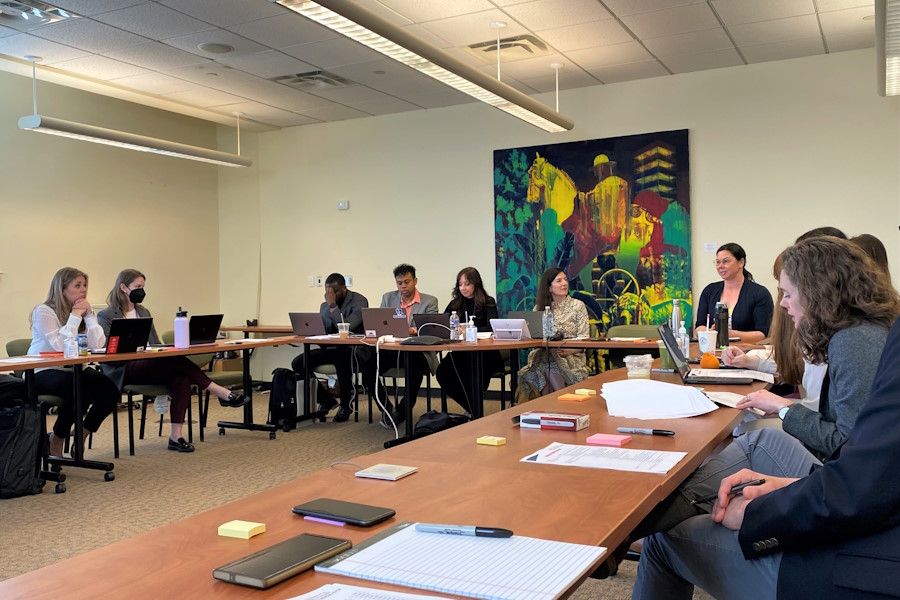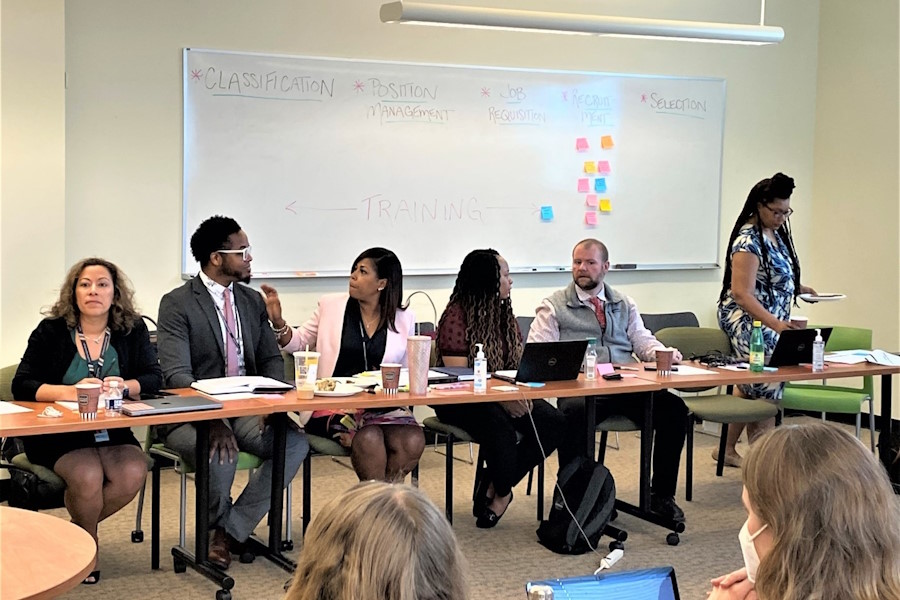Washington, DC
Innovation Team
In 2021, Mayor Bowser and Bloomberg Philanthropies forged a groundbreaking partnership to strengthen Washington, DC's digital landscape. The District, alongside five other global counterparts, was granted a transformative three-year initiative. This partnership enabled the launch of an innovation team (i-team) dedicated to harnessing data and digital technologies. The primary goal is to enhance public services and create an exceptional digital experience for District residents. Notably, Washington, DC represents the pioneering cohort of i-teams that exclusively concentrate on digital transformation since Bloomberg Philanthropies initiated the program in 2011. The momentum behind MOI's i-team is fueled by the crucial adoption of digital tools that deliver effective outcomes to residents. This endeavor aims to elevate government efficiency while offering user-centric services that are easily accessible, seamless, and personalized. Together, Mayor Bowser and Bloomberg Philanthropies are propelling Washington, DC into an innovative era of public service, where data-driven solutions and cutting-edge technologies pave the way for a more connected and empowered community.
Innovation in the Public Sector
i-team’s Path to Progress
Innovation in the public sector examines the development and implementation of new ideas, practices, and technologies to improve the delivery of public services, enhance government operations, and address societal challenges. It involves a systematic process that includes several phases.
Each phase of innovation and its importance:
- Idea Generation The innovation process begins with generating ideas for areas of improvement. This phase involves brainstorming, gathering insights, and seeking inspiration from various sources including residents, employees, experts, and other sectors. The importance of this phase lies in the fact that a diverse range of ideas increases the potential for groundbreaking solutions and encourages creativity.
- Problem Definition Once a pool of ideas is generated, it is crucial to identify and define the specific problems or challenges that the innovation aims to address. Clear problem definition helps in focusing efforts, setting objectives, and aligning innovation initiatives with the needs of the public. It ensures that innovation efforts are directed toward solving relevant issues.
- Design and Development In this phase, selected ideas are further refined and developed into viable solutions. It involves conducting research, prototyping, testing, and iterating the proposed innovations. The importance of this phase lies in transforming abstract concepts into tangible prototypes or strategies that can be evaluated and improved upon. Iterative development allows for adjustments based on feedback and helps in enhancing the effectiveness and feasibility of the innovation.
- Implementation Once the innovation is developed, it needs to be implemented and integrated into the public sector. This phase involves planning, allocating resources, and executing the innovation strategy. Proper implementation ensures that the innovation is effectively deployed and integrated into existing systems and processes. It may involve pilot projects, scaling initiatives, or gradual deployment, depending on the complexity and scope of the innovation.
- Evaluation Evaluation is a critical phase that involves assessing the impact and outcomes of the implemented innovation. It includes monitoring key performance indicators, collecting feedback, and analyzing data to measure the success and effectiveness of the innovation. Evaluation helps in identifying strengths, weaknesses, and areas for improvement, enabling policymakers to make informed decisions about the future direction of the innovation.
- Scaling and Diffusion Evaluation is a critical phase that involves assessing the impact and outcomes of the implemented innovation. It includes monitoring key performance indicators, collecting feedback, and analyzing data to measure the success and effectiveness of the innovation. Evaluation helps in identifying strengths, weaknesses, and areas for improvement, enabling policymakers to make informed decisions about the future direction of the innovation.
Each phase of the innovation process holds importance:
- Idea generation encourages creativity, diversity of thought, and the exploration of unconventional solutions.
- Problem definition ensures that innovations are aligned with real needs and priorities, increasing their relevance and effectiveness.
- Design and development turn ideas into tangible solutions, refining them through prototyping and testing.
- Implementation brings innovations to life, integrating them into existing systems and processes to deliver tangible benefits.
- Evaluation provides feedback and data-driven insights to assess the impact and inform decision-making for future improvements.
- Scaling and diffusion allow successful innovations to reach a larger audience and create transformative change on a broader scale.
By following these phases, the public sector fosters innovation, enhances service delivery, and addresses complex challenges more effectively, ultimately benefiting the society as a whole.



Digital
Transformation
Cities are investing in digital availability and modernization today more so than at any other time. Residents’ expectations of access to and the speed of public resources to solve problems large and small are rising especially on the heels of a global pandemic, which continues to impact the way we live.
The application of online tools, which continues rapid advancement in scale and speed, is proving to serve as an invaluable function in the way metro centers are solving complex and persistent problems for residents.
With a focus on people-centered solutions, local government continues to adopt and apply technology in a way that is effectively delivering services to residents – the end users.
Role of MOI’s
Innovation Team
Collaboration
The innovation team works with relevant District agencies throughout the innovation process to collaboratively build solutions and map implementation – at the end of this process, these agencies will ultimately be responsible for implementation.
Working with Residents
The innovation team is working with its intergovernmental partners across District government to walk them through a carefully designed process for tackling complex problems. We are engaging with residents during the process of designing services, so that service solutions are people centered.
Learning and Analyzing
The innovation team is analyzing and documenting lessons learned so other cities around the world can gain insight and apply our experience to their own challenges.

